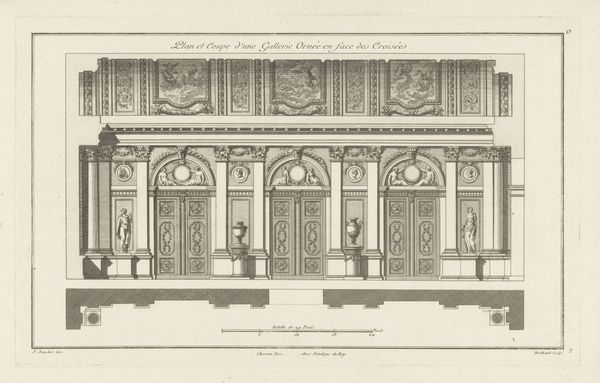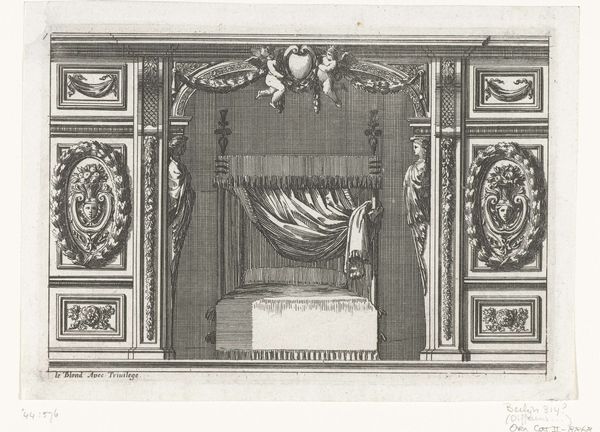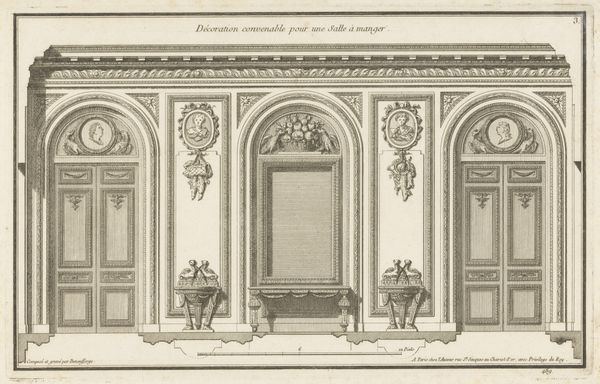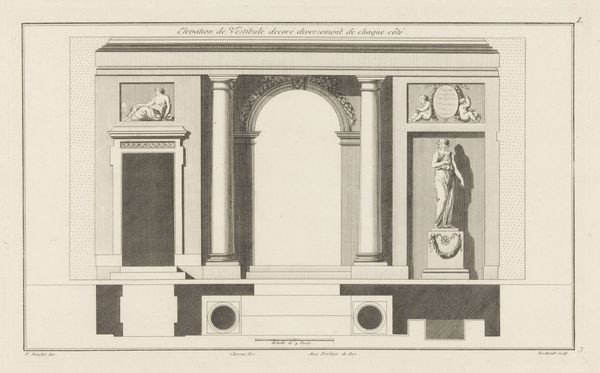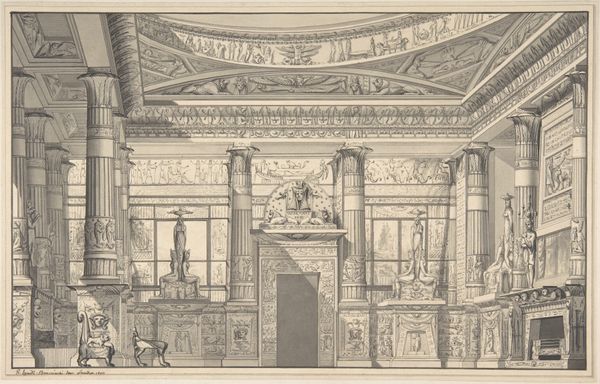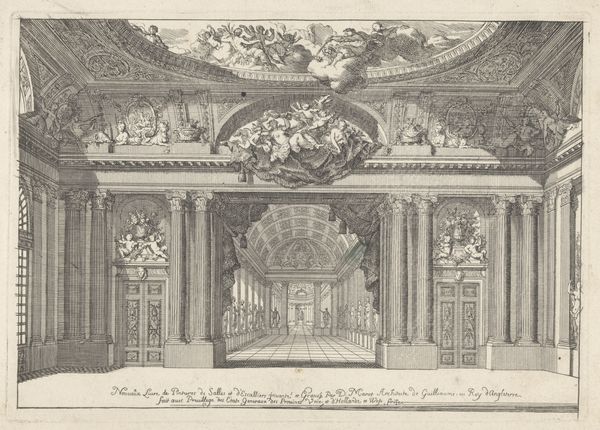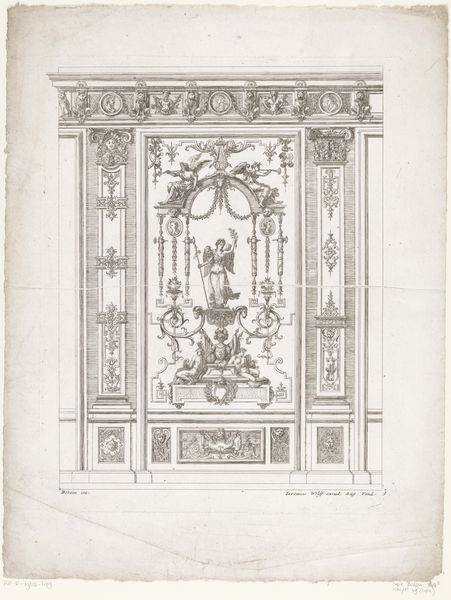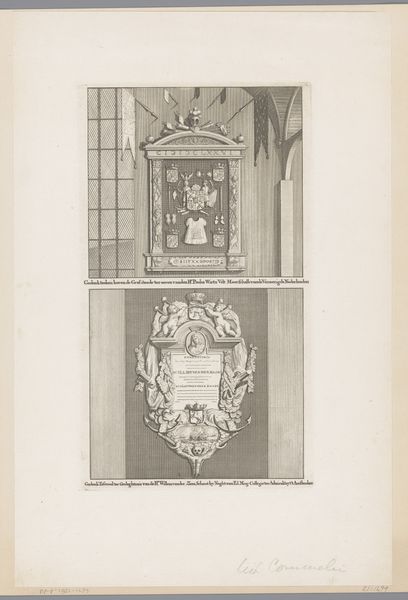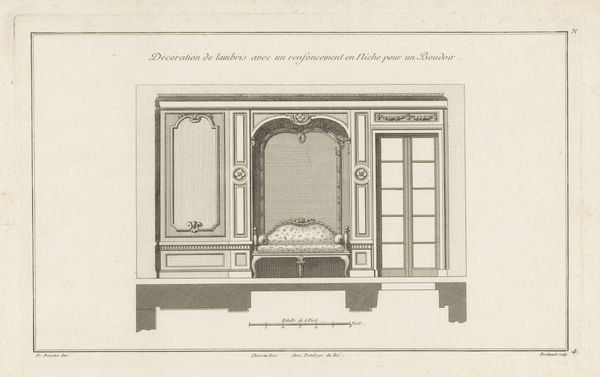
drawing, paper, engraving, architecture
#
drawing
#
neoclacissism
#
old engraving style
#
paper
#
decorative-art
#
engraving
#
architecture
Dimensions: height 228 mm, width 361 mm
Copyright: Rijks Museum: Open Domain
Jean François de Neufforge created this print, Pronkkamer, with etching. This print gives us insight into the decorative schemes of parade rooms, or state rooms, in eighteenth-century France. The image creates meaning through visual codes, cultural references, and historical associations. For instance, we can observe a symmetrical arrangement with classical columns, cherubic figures, and laurel wreaths evoking a sense of classical grandeur and imperial authority. These rooms were not merely spaces for aesthetic appreciation but carefully orchestrated environments designed to project power, wealth, and social status. By studying architectural pattern books such as Neufforge's Recueil d'Architecture, we can gain valuable insights into the culture of elite consumption, the politics of display, and the social rituals of the French court. Understanding this image requires attention to its original social and institutional context. Architectural pattern books were produced for the consumption of architects, designers, and wealthy patrons looking for design ideas. The historical record, combined with the critical analysis of art historians, help us to fully interpret the significance of this print.
Comments
No comments
Be the first to comment and join the conversation on the ultimate creative platform.
